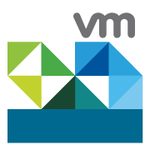Top Virtualization Softwares
Virtualization software transforms computing by creating virtual environments, enabling multiple operating systems to run on a single physical machine. It optimizes resource allocation, enhances efficiency, and improves flexibility in IT infrastructure. By abstracting hardware layers, this technology reduces hardware costs and enables scalable deployment. It plays a vital role in powering cloud co... Read More
30 companies found
Paperspace
Product Description
Paperspace is a platform designed to simplify cloud computing and make it accessible for companies of all sizes. It offers a suite of tools that helps businesses manage their computing resources without the need for an extensive infrastructure. With Paperspace, companies can run high-performance applications, develop machine learning models, and manage several tasks that require significant comput... Read More
Users
- • No Data
Industries
- • No Data
Market Segment
- • No Data
Product Description
Virtuozzo is a company that specializes in software designed to make running applications and websites easier, more efficient, and more reliable. They focus on providing solutions that cater to the needs of businesses that offer Software-as-a-Service (SaaS). Virtuozzo software helps businesses by simplifying server management and improving performance with its robust virtualization technology. T... Read More
Users
- • No Data
Industries
- • No Data
Market Segment
- • No Data
IBM Turbonomic
Product Description
IBM Turbonomic is a software solution designed to help businesses manage their IT resources more effectively. Whether you run applications in the cloud, on-premises, or in a hybrid environment, IBM Turbonomic aims to make your life easier by optimizing the performance and cost-efficiency of your IT infrastructure. Imagine you have various applications and systems running, and they all need a bala... Read More
Users
- • No Data
Industries
- • No Data
Market Segment
- • No Data
CloudSigma
Product Description
CloudSigma offers a flexible and versatile cloud computing platform designed to meet a wide range of demands in the business world. We understand that no two companies are the same, so our cloud services are built to be easily customizable, providing you with the perfect fit for your needs without unnecessary complications or added costs. With CloudSigma, you get straightforward pricing without h... Read More
Users
- • No Data
Industries
- • No Data
Market Segment
- • No Data
Product Description
Dizzion offers a practical solution for companies that need secure, reliable desktop services delivered through the cloud. Designed to make remote work easy and efficient, Dizzion focuses on providing high-quality, virtual desktop experiences. Virtual desktops are essentially computers that live in the cloud. With Dizzion, employees can access their personalized desktop environment from anywhere... Read More
Users
- • No Data
Industries
- • No Data
Market Segment
- • No Data
Product Description
Nomadesk is a software solution designed to meet the needs of businesses looking for an efficient and secure way to manage their files and collaborate with team members. If your company deals with large amounts of data and requires a simple, reliable method to store, share, and access important documents, Nomadesk can help. With Nomadesk, you can store your files in a virtual space known as a Tea... Read More
Users
- • No Data
Industries
- • No Data
Market Segment
- • No Data
Product Description
Awingu is a software solution that helps businesses easily access and manage their applications and files from any device with an internet connection. Imagine being able to use your work computer, tablet, or even smartphone to get to all your important work documents and programs, without complicated setups or needing to juggle multiple logins. Awingu provides a secure, browser-based workspace th... Read More
Users
- • No Data
Industries
- • No Data
Market Segment
- • No Data
VMware vSphere
Product Description
VMware vSphere is a comprehensive suite designed to simplify your IT operations and help you take full advantage of virtualization technology. If you're looking to streamline your business processes and boost productivity, vSphere could be a good fit. It offers a straightforward way to manage virtual machines, storage, and networks under one platform. One of the main benefits of vSphere is its ab... Read More
Users
- • No Data
Industries
- • No Data
Market Segment
- • No Data
Product Description
EasyTry is a user-friendly software designed to help businesses offer trial versions of their products to potential customers seamlessly. With EasyTry, companies can provide a hassle-free experience for users who want to test out their services before making a commitment. This not only builds trust but also increases the likelihood of converting trial users into long-term customers. At its core, ... Read More
Users
- • No Data
Industries
- • No Data
Market Segment
- • No Data
Product Description
VMC provides a cloud-based software solution aimed at simplifying and enhancing the way businesses manage their operations. At its core, VMC software is all about making things easier and more efficient for companies, regardless of their size or industry. Think of it as a versatile toolset that helps streamline various aspects of business management. With VMC, tasks that used to be time-consuming... Read More
Users
- • No Data
Industries
- • No Data
Market Segment
- • No Data
What is virtualization software and how does it work?
Virtualization software is a technological solution that enables the creation of virtual instances of computer systems, allowing multiple operating systems and applications to run on a single physical machine. This technology abstracts and isolates the hardware from the operating system, providing a layer that allows for various computing environments to coexist on the same hardware platform.
Understanding Virtualization
Virtualization software operates by simulating a complete hardware environment in which an operating system and applications can run. This is accomplished through a virtual machine (VM), which is an emulated instance of a computer system. Each VM has its own virtual CPU, memory, storage, and network interfaces. These virtualized elements are managed by a hypervisor, which is central to virtualization technology.
How Virtualization Software Works
-
Hypervisor Role: The core component of virtualization software is the hypervisor. It acts as a middle layer between the physical hardware and the virtual machines. Hypervisors are of two main types:
- Type 1 (Bare-metal Hypervisor): Installed directly on the physical hardware, it offers high efficiency and performance.
- Type 2 (Hosted Hypervisor): Runs on top of an existing operating system, making it easier to set up but typically less efficient.
-
Resource Allocation: Virtualization software allocates resources such as CPU cycles, memory space, and storage to each virtual machine. This is flexible and can be adjusted according to requirements, allowing optimal utilization of physical resources.
-
Isolation: Each virtual machine operates independently. Virtualization software ensures isolation, meaning that operations performed in one VM do not affect others. This enhances security and reliability since issues in one environment do not propagate.
-
Abstraction: Virtualization software abstracts the hardware components, creating a standardized interface that each virtual machine uses to access computing resources. This abstraction layer simplifies deployment and management, allowing diverse operating systems and applications to run simultaneously on the same machine.
-
Management: Virtualization software typically includes a management layer for ease of administration. This enables the creation, management, and deletion of VMs, along with monitoring of their performance and resource usage. Scalability is another key benefit, as administrators can spin up or shut down VMs based on demand.
Benefits of Using Virtualization Software
- Cost Efficiency: By running multiple virtual machines on a single server, organizations can reduce hardware expenses.
- Reduced Downtime: Virtual machines can be moved between host servers without interruption, facilitating maintenance and minimizing downtime.
- Scalability: New virtual instances can be created quickly to respond to changes in workload demand.
- Testing and Development: Developers can use virtualization software to create isolated environments for testing new applications or updates with minimal risk.
In summation, virtualization software empowers organizations to maximize resource utilization and improve flexibility. This is achieved through the separation of hardware from operating system environments, enabled by sophisticated management and allocation of virtualized resources.
What are the benefits of using virtualization software?
Cost Savings
Virtualization software helps in reducing hardware costs by allowing multiple virtual machines (VMs) to run on a single physical server. This consolidation decreases the need for numerous physical servers, leading to savings in hardware investment. Additionally, it minimizes electricity and cooling expenses due to reduced server usage.
Improved Resource Utilization
By enabling multiple operating systems and applications to run on one server, virtualization software ensures better utilization of available resources. It dynamically allocates the right amount of compute power required for each VM, maximizing server efficiency and performance.
Ease of Management
Virtualization software simplifies server management by providing centralized control over virtual environments. Administrators can easily configure, monitor, and automate tasks across all VMs. This streamlining reduces the time and effort involved in managing a traditional hardware setup.
Faster Provisioning and Deployment
Creating a new server in a virtualized environment is faster compared to setting up physical hardware. Virtualization software enables rapid provisioning of new servers, which accelerates deployment. This quick turnaround time supports agile business needs and fosters innovation.
Scalability
With virtualization software, organizations can scale their resources up or down with ease. It allows businesses to add new resources or VMs without major infrastructure changes. This flexibility ensures that IT resources align with fluctuating business demands.
Disaster Recovery and Backup
Virtualization software enhances disaster recovery processes. VMs can be easily backed up and replicated to a different location, ensuring minimal data loss during failures. The ability to quickly restore VMs from backups helps businesses recover faster from disruptions.
Enhanced Testing and Development
Virtualization software enables developers to create multiple isolated environments for testing and development. They can test different scenarios without affecting production systems. Virtual environments help streamline the software development lifecycle and enhance quality assurance processes.
Improved Security
Virtualization software offers increased security by isolating different applications and operating systems. Each VM operates in its own environment, ensuring that issues in one VM do not affect others. This isolation provides a stronger security posture for businesses.
Reduced Downtime
Virtualization software supports live migration, allowing VMs to be moved from one physical server to another with no downtime. This feature supports continuous operations and reduces maintenance interference. It proves invaluable for businesses requiring high availability.
Environmental Benefits
By reducing the need for physical servers, virtualization software aids in minimizing the carbon footprint associated with data centers. Fewer servers lead to reduced energy use and lower emissions, contributing to environmental sustainability.
Virtualization software offers numerous advantages that enhance operational efficiency, cost-effectiveness, and scalability. It serves as a critical tool for businesses seeking to optimize their IT infrastructure while fostering growth and innovation.
How Does Virtualization Software Improve Resource Management?
Virtualization software plays a crucial role in improving resource management within IT environments. It achieves this by abstracting physical hardware and creating virtual machines (VMs) that emulate real computers. Through this abstraction, organizations can optimize their hardware utilization, ensuring better efficiency and cost-effectiveness.
Efficient Hardware Utilization
Virtualization software enhances hardware utilization by permitting multiple VMs to run on a single physical server. Each VM can operate different applications and systems independently, proficiently using the available resources. This consolidation reduces the need for physical hardware, minimizing operational and maintenance costs while maximizing the utility of existing resources.
Improved Scalability
Virtualization software facilitates rapid scalability by enabling the quick deployment and management of additional VMs. When an organization needs to increase processing power or storage, new virtual machines can be deployed swiftly without acquiring more physical infrastructure. This flexibility allows businesses to scale their operations seamlessly in response to evolving demands.
Reduced Downtime
By using virtualization, resource management benefits through minimized downtime. Virtualization software allows for live migration, which means moving VMs between hosts without service interruption. This capability ensures continual availability and minimizes disruptions during hardware maintenance or upgrades.
Energy Efficiency
The integration of virtualization software in data centers leads to significant energy savings. Running multiple virtual environments on fewer physical machines reduces power consumption and heat generation. These efficiencies translate into lower energy bills and contribute positively to environmental sustainability.
Simplified Management and Automation
Virtualization software enhances resource management by simplifying the oversight and automation of IT resources. Administrators can manage virtual networks, storage, and servers through centralized tools. Automation scripts can execute routine tasks, ensuring that resources are allocated efficiently and that configurations remain consistent across VMs.
Cost Savings
By consolidating servers and optimizing resource allocation, virtualization software reduces operational costs significantly. Organizations reduce expenditures on purchasing, maintaining, and powering hardware. Virtualization also extends the lifecycle of existing hardware by decreasing its workload, contributing further to cost efficiencies.
Enhanced Disaster Recovery
Virtualization software improves disaster recovery capabilities by streamlining backup and recovery processes. Virtual machines can be easily cloned or moved to different hosts or data centers, ensuring data and service continuity even in case of physical server failure. The ability to restore VMs rapidly aids in meeting recovery time objectives.
Virtualization software is a vital component in modern IT infrastructures, offering significant benefits in resource management. Its capacity to optimize hardware utilization, provide scalability, reduce downtime, and offer cost savings makes it indispensable for organizations seeking efficiency and flexibility. Thus, virtualization software remains pivotal in resource management strategies.
What types of virtualization software are available?
Virtualization software is a crucial technology in the world of IT. It enables users to run multiple operating systems or applications on a single physical machine. This process enhances resource utilization, scalability, and operational flexibility. Various types of virtualization software exist, each serving unique purposes and needs.
Server Virtualization
Server virtualization is one of the most common types. It involves dividing a physical server into multiple virtual servers. Each virtual server can run its own operating system and applications independently. Server virtualization increases the utilization of server resources and reduces the need for physical hardware.
Desktop Virtualization
Desktop virtualization separates the desktop environment and associated applications from the physical client device. This type includes virtual desktop infrastructure (VDI), where desktops are hosted on a central server. Users can access their desktop environments remotely, enhancing security and flexibility, and reducing IT costs.
Application Virtualization
Application virtualization allows applications to run on devices without being directly installed on them. This type isolates apps from the underlying operating system, enabling them to run in self-contained environments. As a result, it helps in avoiding compatibility issues and simplifies software management.
Network Virtualization
Network virtualization divides available bandwidth into independent channels that can be assigned to specific servers or devices. This improves network efficiency, flexibility, and scalability. It allows for rapid deployment of networking resources and services without affecting the underlying network infrastructure.
Storage Virtualization
Storage virtualization aggregates multiple network storage resources into what appears to be a single storage device. This simplifies storage management and improves scalability and utilization. By abstracting storage hardware, it enhances data management capabilities, creating a flexible storage architecture.
Data Virtualization
Data virtualization provides a unified layer of data access without requiring physical data movement. It integrates data from disparate sources into a single, consolidated view, enabling real-time access and analysis. Users can interact with data stored in various formats or locations as if it were all in one place.
OS Virtualization
Operating system virtualization, also known as containerization, allows multiple applications to run in isolated environments on a single operating system. Containers share the OS kernel but have separate processes, storage, and network spaces. This type enhances deployment speeds, resource efficiency, and is widely used for cloud-native applications.
Hardware Virtualization
Hardware virtualization is the abstraction of computing resources from the hardware by the use of software. It often involves virtual machines (VMs) where the virtualization software allows hardware resources to be shared across different VMs. This improves resource allocation and hardware utilization.
Virtualization Software Management
Beyond these categories, virtualization software management tools support tasks like monitoring, automation, and optimization of virtual environments. These management solutions enhance the efficiency of virtualization setups and streamline resource management, ensuring optimal performance and allocation.
By understanding the varied types of virtualization software, businesses can strategically implement solutions that match their operational needs and objectives, ultimately leading to increased efficiency and reduced costs across IT environments.
How does virtualization software enhance security?
Virtualization software is pivotal in enhancing security within IT environments, providing several layers of defense and management capabilities. By allowing multiple operating systems and applications to run on a single physical machine, virtualization isolates systems and optimizes resources while bolstering security standards.
Isolation and Containment
Virtualization software utilizes virtual machines (VMs) to run discrete workloads on a shared infrastructure. This isolation sets a boundary between applications, ensuring that any malicious activity in one VM remains contained. By separating these environments, virtual machines help prevent the spread of viruses or malware, limiting their impact and reach.
Snapshots and Rollbacks
Regular snapshots allow users to capture the state of a virtual machine at specific intervals. In case of a security incident or breach, VMs can be rapidly rolled back to a safer snapshot. This ability allows for quick recovery from attacks, minimizing downtime and reducing the risk of data loss.
Secure Management
Centralized management consoles for virtualization software facilitate cohesive security policy enforcement across all virtual machines. Administrators can easily manage and update security settings from a unified location. This ensures that all VMs comply with security requirements, simplifying the application of security patches and reducing vulnerabilities.
Resource Segmentation
Virtualization software divides hardware resources such as CPU, memory, and storage among virtual machines. This segmentation prevents the monopolization of resources by any single VM, providing security against Denial-of-Service (DoS) attacks. Balanced resource allocation ensures that legitimate processes maintain access to necessary resources.
Access Control
With virtualization software, administrators can implement strict access controls. User permissions are limited to specific VMs or functions, reducing the risk of unauthorized actions. This granular level of access management protects sensitive systems and data by granting privileges on a need-to-know basis.
Secure Networking
The virtualization of network components allows for enhanced security protocols. Virtual switches and routers have built-in features like VLAN tagging and virtual firewalls. These provide segmentation and enforce network policies, ensuring secure data flow between virtual machines and their external interactions.
Rapid Patch Deployment
Virtualization software simplifies the deployment of operating system and application patches across numerous environments. Security updates can be applied quickly and consistently, reducing exposure to threats. The ability to test patches within a VM environment before complete deployment minimizes the risk of negative impact on production systems.
Disaster Recovery and Business Continuity
Virtualization software improves disaster recovery strategies by enabling seamless backup and replication. VMs can be duplicated and restored in case of failure, ensuring that business operations continue uninterrupted. This capability safeguards data and maintains operations in various scenarios, enhancing the overall security posture.
In summary, virtualization software provides a robust framework for enhancing security through features like isolation, rapid recovery, centralized management, and efficient resource utilization. Its ability to segment and control virtual environments offers a strong defense mechanism against pervasive security threats.
What industries commonly use virtualization software?
Virtualization software is a critical tool across numerous industries due to its ability to optimize resource use and enhance system efficiency. Below is an exploration of the key sectors where Virtualization software finds extensive application:
Information Technology (IT) and Cloud Computing
-
IT Infrastructure: Virtualization software is foundational in IT infrastructure, facilitating server consolidation, reducing physical server requirements, and enabling easier maintenance. It improves scalability and disaster recovery, ensuring business continuity.
-
Cloud Service Providers: Cloud computing relies heavily on virtualization to deliver Infrastructure as a Service (IaaS). It allows the abstraction of hardware resources, enabling multiple virtual machines to run on a single physical machine.
Telecommunications
-
Network Function Virtualization (NFV): Telecom companies use virtualization software for NFV, which allows network functionalities to be performed in a virtual environment. This improves service agility, reduces costs, and accelerates service deployment.
-
5G and Edge Computing: In the development of 5G networks, virtualization is crucial for creating flexible and scalable network architectures. It supports edge computing initiatives, bringing computation closer to data sources.
Healthcare
-
Data Management: Healthcare organizations utilize virtualization software for managing vast amounts of patient data securely and efficiently. It enhances the ability to share data across different platforms and devices without compatibility issues.
-
Medical Imaging and Diagnostics: Virtualization allows healthcare professionals to store and access large imaging files and diagnostics tools without heavy reliance on specialized hardware.
Financial Services
-
Secure Transactions: Financial institutions employ virtualization to ensure secure transaction processing. It helps in segregating networks, ensuring that sensitive information is not compromised.
-
Automated Trading: Virtualization software supports high-frequency trading activities by providing scalable and robust computing environments, essential for handling large volumes of transactions efficiently.
Education
-
Virtual Classrooms and Labs: Educational institutions integrate virtualization technology to enable virtual labs and classrooms, allowing students to access resources remotely. This supports diverse learning environments and elevates the educational experience.
-
Resource Allocation: Efficient resource allocation and management within educational IT departments are achieved through virtualization, supporting mass deployment of educational software and applications.
Manufacturing
-
Product Design and Simulation: In manufacturing, virtualization software is used for product design and simulation models. It enables engineers to test and modify designs in virtual environments before production.
-
Supply Chain Management: Virtualization helps streamline supply chain processes by offering a centralized view of operations, enhancing inventory management and production planning.
Media and Entertainment
-
Content Creation and Distribution: Media firms use virtualization for content creation tools and distribution networks. It allows flexible scaling of creative resources and efficient handling of large multimedia files.
-
Animation and Rendering: The animation industry benefits from virtualization in rendering processes, enabling the allocation of resources as needed for demanding graphic processes.
Each of these industries benefits from the flexibility, efficiency, and cost savings offered by Virtualization software. By allowing multiple operating systems and applications to run on a single physical server, businesses can maximize their IT investments and respond more agilely to changing needs.
How does virtualization software support cloud computing?
Virtualization software serves as a backbone for cloud computing, offering a foundation that transforms traditional IT operations. The essence of virtualization lies in its ability to create multiple simulated environments or dedicated resources from a single physical hardware system. This capability is fundamental to cloud computing, which relies on flexibility, efficiency, and scalability.
Resource Optimization
Virtualization software optimizes the use of physical resources by allowing multiple virtual machines (VMs) to run on a single physical server. This maximization means cloud providers can serve numerous clients with diverse needs, all from a shared infrastructure. It allows for better utilization of hardware resources, reducing waste and improving the server's efficiency.
Scalability and Flexibility
One of the key benefits of virtualization software is its inherent scalability. In cloud computing, demand can fluctuate drastically. Virtualization allows for easy scaling of resources up or down, based on real-time needs. Whether it is increasing storage, computing power, or networking capabilities, virtualization enables seamless adjustments, ensuring that resources are always aligned with current demand.
Isolation and Security
Security is paramount in cloud environments. Virtualization software provides isolation between virtual machines. Each VM operates independently, reducing the risk of one compromised VM affecting others. This isolation adds a layer of security, as each virtual machine can run different operating systems and applications, separated from those on other VMs.
Disaster Recovery and Backup
Virtualization software enhances disaster recovery strategies in cloud computing. By creating snapshots or backups of VMs, organizations can quickly restore systems in the event of a failure. This capability is vital for maintaining business continuity. Restoration from virtualized environments is faster and often more reliable, helping organizations minimize downtime.
Cost Efficiency
The use of virtualization software in cloud computing reduces the need for physical hardware, leading to reduced operational costs. Organizations no longer need to invest in or maintain extensive on-premises servers. By sharing resources efficiently among different users, virtualization decreases the overall expense of server management, space, and energy consumption.
Simplified Management
Cloud environments can be complex to manage, but virtualization software simplifies the process. Through a centralized interface, administrators can manage multiple virtual machines with ease. This centralized management reduces overhead and offers better control over resources, configurations, and policies across the cloud infrastructure.
Enhanced Development and Testing
Developers benefit from virtualization software by creating isolated environments ideal for testing and development. Cloud computing offers these environments on demand, giving developers the resources they need while keeping them isolated from production environments. This segregation helps in identifying and fixing issues without impacting live services.
Contribution to Innovation
By providing a platform that supports various operating systems and applications, virtualization software promotes innovation. It allows businesses to deploy new solutions rapidly, without the need for significant hardware investment. Cloud computing leverages this capability to encourage exploring new technologies, improving responsiveness, and adapting to change quickly.
Virtualization software is integral to cloud computing, enabling efficient, scalable, and secure services. It underpins the cloud's ability to offer flexible and cost-effective solutions, transforming how businesses operate and innovate. This symbiosis between virtualization and the cloud is fundamental to modern IT infrastructures.









